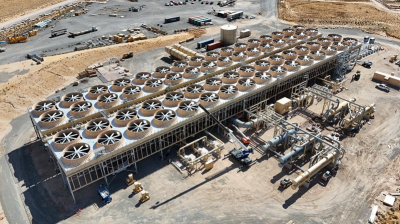AltaRock answers New York Times article on earthquake fears
In a response to the article in the New York Time on geothermal drilling at the Geysers possibly causing earthquakes, AltaRock posted a detailed reply highlighting the differences between the Basel case as referenced in the article.
In reply to the recent article on earthquakes fear through a geothermal project by AltaRock at the Geysers in California, the company provided the following reply on its website.
“AltaRock’s EGS demonstration project in the Geysers was recently the subject of a NYT article which, while noting the promise of EGS as part of the country’s alternative energy portfolio, questioned whether EGS was safe.
AltaRock has been focused on the safety and success of our project from the beginning, and will continue to work with the community and regulators to ensure geothermal energy can provide our state with clean, abundant, and affordable energy.
The article compared our demonstration project at the Geysers to a project in Basel, Switzerland, but these projects are very different:
We took extraordinary care in choosing our site at the Geysers to avoid siting on a major fault. The Basel Project drilled into a significant fault.
- Basel sits on top of a large (200 kilometer long) “locked” fault that previously ruptured and heavily damaged the city in the 14th century. Over the course of a year, we reviewed nine different sites in North America. We carefully chose our site to avoid Basel’s problems. There has been geothermal energy production at the Geysers since 1965. AltaRock’s project is located in a seismically active area adjacent to smaller faults (the closest faults are 3 & 11 kilometers long) which are not “locked” due the constant stress relief resulting from small seismic movements.
Smaller faults mean smaller events, and the faults in the Geysers area are significantly smaller than at Basel.
- The Geysers is a seismically active area with many smaller faults unconnected to larger and longer faults located elsewhere in CA. Smaller faults produce smaller magnitude events. Basel’s geology is very different. In the over 40 years of geothermal energy production at the Geysers, induced seismicity events have been extensively studied and very modest and are expected to be no different with AltaRock’s project, which will involve two geothermal wells in an existing field of more than 350 wells.
The geology of the Geysers is very different – seismic studies predict events at the Geysers likely to be imperceptible at the surface.
- The Geysers has been extensively studied and seismically mapped, as it has been an area of active geothermal energy production for over 40 years. Altarock has used this extensive data to site its project, unlike Basel, sufficiently far away from faults.
Events of similar magnitude to Basel occur frequently in California.
- More than 100 events with a similar magnitude to Basel occur in California annually with negligible impact.
Basel produced an event with a magnitude which is more than 10 times the size of the maximum event estimated for our project.
- AltaRock conducted a detailed induced seismicity study regarding its project which estimated a maximum event of a size which is generally not felt on the surface and does not damage structures. Basel produced a magnitude 3.4 event which is more than 10 times the size event indicated by the studies.
We have installed monitoring and control procedures and designed pressure relief mechanisms to minimize any impact.
- There is widespread agreement in the scientific community that the appropriate mitigation for the potential of induced seismicity is effective management and monitoring. AltaRock has installed a very sophisticated subsurface array of seismic monitoring equipment which will allow it to constantly monitor seismicity during project activities and suspend those activities if appropriate. This critical monitoring and control mechanism was absent in Basel.
- AltaRock is employing different techniques from those used at Basel—the water rock fracturing is being conducted at a much lower pressure than that used at Basel and AltaRock’s project design employs a key pressure relief mechanism to flow back the well and relieve any heightened pressures that may be recorded on AltaRock’s sophisticated subsurface monitoring array—this key pressure relief design feature was absent from Basel.
We are employing proprietary technologies to ensure a safe and well-controlled project.
- Another key difference between the AltaRock and Basel projects is that Altarock’s scientists have developed and filed a portfolio of EGS patents, which patents address each phase of the EGS process and result in a very different project design from Basel. AltaRock will be employing these proprietary technologies in the demonstration project to ensure a safe and well-controlled project that we expect to become the industry standard.
We have actively involved and informed the community.
- Unlike the Basel project, which surprised residents as there had been little, if any, public meetings on the project, AltaRock has been attending local community meetings since mid-2008, and informing the local community groups about the project. We have volunteered to install a ground motion sensor in the closest town and provide seismic data on a website so that local residents can be informed. AltaRock’s key goal is to ensure that we maintain excellent community relations by being transparent in our activities, and proactively addressing any issues raised by local residents.
California needs power and as the nation’s largest state economy it has the biggest demand for alternative, non- carbon based energy sources. EGS at the Geysers has the potential to provide clean energy to supply much of California’s renewable needs.”
Source: AltaRock website











